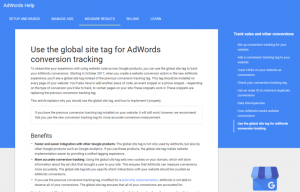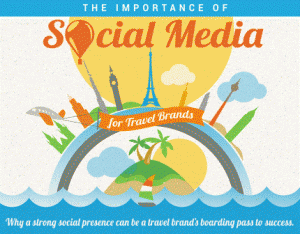— September 22, 2017
For the sales profession, social media is the most important technological advancement since the telephone. Here’s how to get an unfair advantage.

In Jeb Blount’s bestselling book, Fanatical Prospecting: The Ultimate Guide to Opening Sales Conversations and Filling the Pipeline by Leveraging Social Selling, Telephone, Email, Text, and Cold Calling, he explains that social selling (sometimes called social prospecting) has become a critical component of a balanced sales prospecting methodology.
Further, he maintains: “I believe that for the sales profession, social media is the most important technological advancement since the telephone.”

To listen to a Marketing Book Podcast interview with Jeb Blount about Fanatical Prospecting, click here.
Social media provides a seller with much more information than they’ve ever had, and not just contact information but also context. With social media you can gain glimpses into your prospects’ behavior, desires, preference, and triggers that drive buying behavior and open buying windows.
Top-performing salespeople know this and that’s why they are rapidly adopting social selling tactics for prospecting.
But social selling is not a panacea. Beware the sales and marketing gurus who proclaim that social selling will solve all your sales problems.
Here’s the truth – contact and conversion rates from phone and email dwarf conversion rates on social media. Here’s more truth – social selling is not selling.
If you’re trying to peddle your wares on social media you’re likely not selling anything AND you’re irritating people and damaging your reputation and relationships. Prospects don’t want to be pitched or sold on social media.
What they do want is to connect, interact and learn. That’s why the social channels are better suited to building familiarity, lead nurturing, research and inbound prospecting, and trigger-event awareness.
Social prospecting is about nuance, tact, and patience. It is a collective term that encompasses a variety of activities – all designed to enrich the sales process and fill the pipeline with more qualified and motivated prospects.
So which social media platforms should you use? Blount advises answering two questions: 1) On which social channels will I find my customers and prospects?, and 2) On which social channels do I feel most comfortable?
But beware the potential time suck. Social media is designed to be addictive so you’ll spend more time on it so the platforms can devour your time and attention and sell it to advertisers. It’s not much different from parking yourself in front of a TV screen. However, on social media you can actually accomplish something versus watching TV.
Fortunately, you can learn to use social media the right way so it is a good use of your time. Your time spent on social media must be focused on increasing the size and viability of your sales pipeline. Efficient and effective are the name of the game.
Here are five social prospecting objectives Blount recommends keeping in mind:
1. Personal Branding and Building Familiarity.
The primary reason why you should engage in social selling is to improve familiarity and build trust. You want to be seen and heard, and you want to be viewed as a credible resource for potential buyers.
Your social media profiles are a direct reflection of your personal brand. Your profiles are the tip of the social selling spear. Until your prospect meets you by phone or in person, who you are online is who you are. As you review your online profiles, answer this question: Would you buy from you?
2. Inbound Prospecting Through Education and Insights.
The very best outcome of the investment you make in social media is to entice prospects to contact you. Familiarity plays a key role in inbound prospecting because occasionally prospects will contact you as they move into the buying window for your product or service.
Sharing and publishing relevant content that is intriguing to prospects and helps them solve problems, answering questions in groups, and posting thoughtful comments can open the door to prospects contacting you for more information or to ask questions – especially when these posts position you as an expert.
3. Trigger-event and Buying-Cycle Awareness.
Trigger events are disruptions in the status quo that open buying windows and compel buyers to take action. Most social networks give you the ability to follow people without being directly connected to them. It is important to consistently monitor your news stream, lists, update alerts, and discussions in the groups for trigger alerts.
4. Research and Information Gathering.
Social media is a cornucopia of data. You can gather an impressive amount of information about prospects that can be plugged into your database, used to develop prospecting messages, and leveraged for decision-maker mapping and pre-call planning.
5. Outbound Prospecting.
The social channels allow you to directly engage prospects to ask for appointments or gather additional information. You can message them directly through the platform, or just pick up the phone and call. Many people include phone numbers and email addresses on their profiles.
Digital & Social Articles on Business 2 Community
(16)







